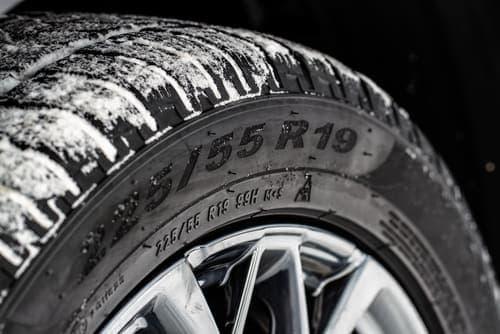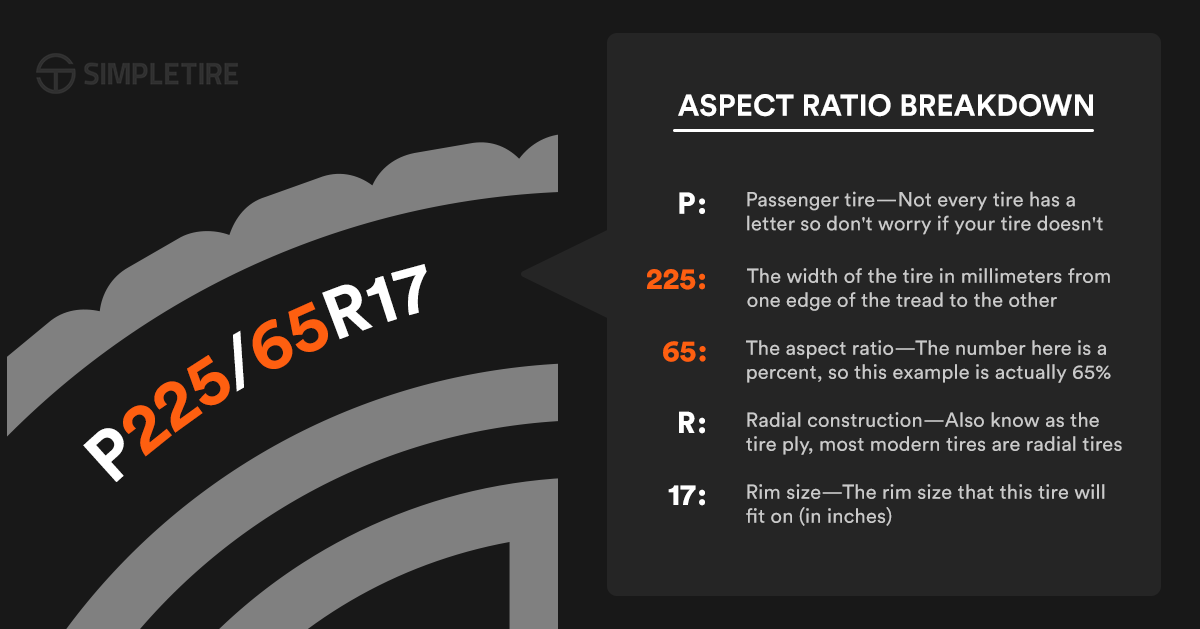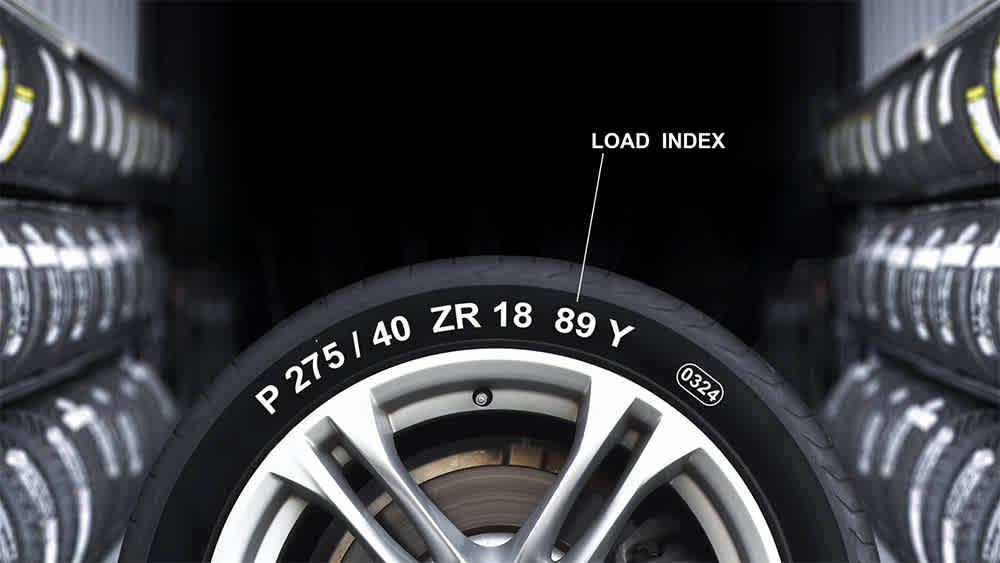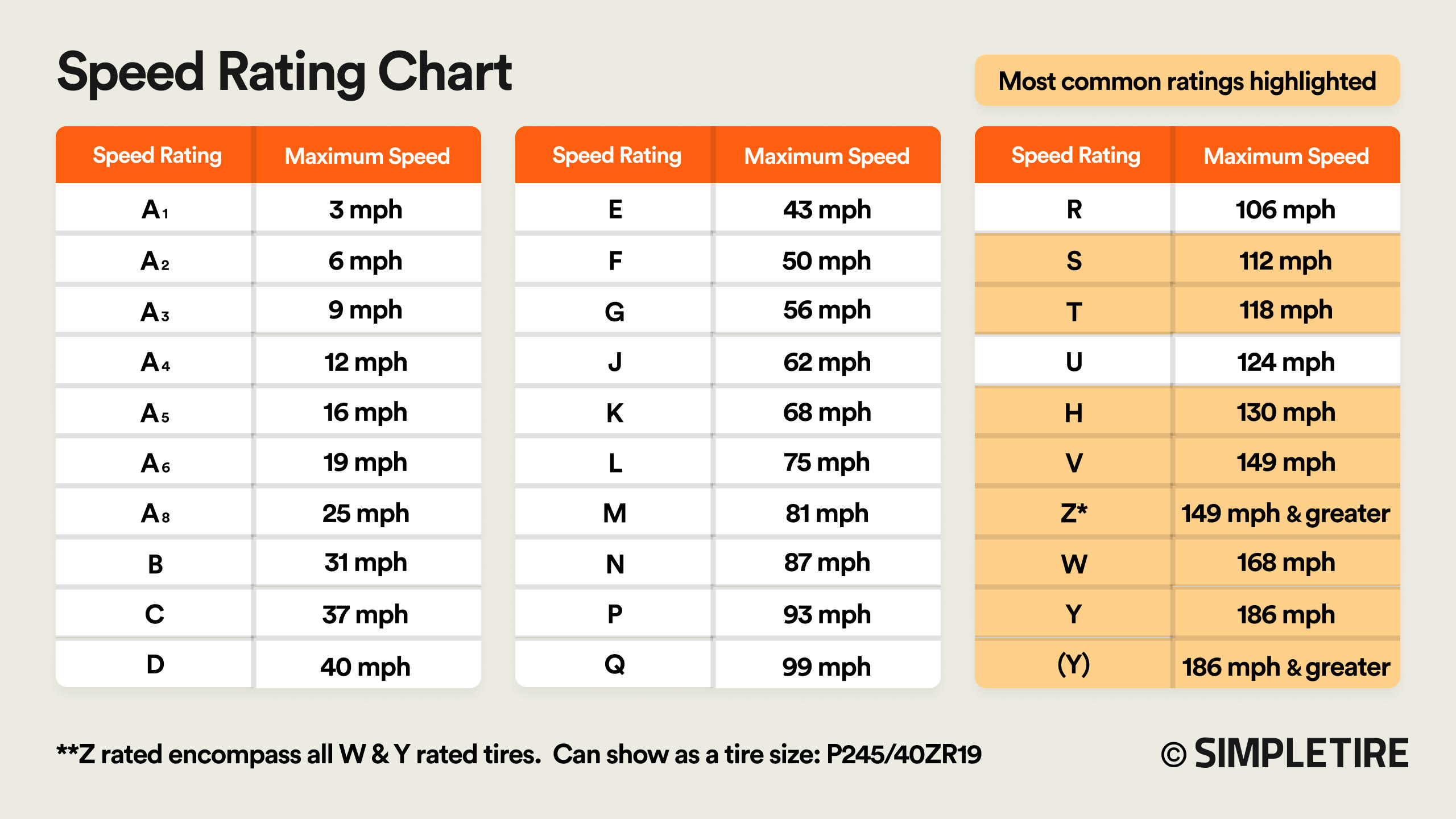Tire Maintenance & Safety
Best price guarantee
Tire replacement coverage
24/7 roadside assistance
Easy returns

Tire size may seem like a random combination of numbers and letters, but it's actually a crucial factor in your vehicle's performance and safety. Decoding these numbers is essential for selecting the right tires that fit your car and driving needs.
Understanding tire size can be confusing at first glance, but it's not as complicated as it appears. By learning how to read tire size, you'll be well-equipped to make informed decisions when purchasing new tires for your vehicle.
Tire size directly impacts various aspects of your driving experience, from handling and comfort to fuel efficiency and longevity. Choosing the correct tire size ensures optimal performance and helps you avoid potential issues down the road.
What Do the Numbers on Tires Mean?
The numbers and letters on a tire's sidewall provide essential information about the tire's dimensions, load capacity, speed rating, and construction. Understanding how to read tire size is crucial for ensuring you select the right tires for your specific vehicle make and model.
Here's a breakdown of what each part of the tire size code represents:
- Tire Type: The letter at the beginning (e.g., P, LT, ST) indicates the tire's intended use—passenger vehicle, light truck, or special trailer.
- Tire Width: The first three-digit number (e.g., 225) is the tire's width in millimeters from sidewall to sidewall.
- Aspect Ratio: The two-digit number after the slash (e.g., 55) is the tire's height from the wheel to the tread as a percentage of its width—lower numbers mean a shorter sidewall.
- Construction Type: The letter following the aspect ratio (e.g., R) denotes the tire's internal construction—most commonly, "R" for radial.
- Wheel Diameter: The last two-digit number (e.g., 19) is the wheel diameter in inches, crucial for proper fitment.
- Load Index: A two- or three-digit number that corresponds to the maximum weight the tire can support when properly inflated.
- Speed Rating: A letter at the end indicating the maximum speed the tire can safely maintain.
By deciphering this code, you can ensure that you're selecting tires that are compatible with your vehicle and suitable for your driving style and conditions. Choosing the right tire size is essential for maintaining your vehicle's handling, stability, and overall performance—so it's worth taking the time to understand what those numbers and letters really mean.
Understanding Tire Width
The width of a tire significantly influences how your vehicle performs on the road. This measurement appears as the first set of numbers in the tire size code and is recorded in millimeters, spanning from one sidewall to the other. It plays a pivotal role in determining how your vehicle handles various driving conditions.
Stability and Traction
- Enhanced Road Grip: A greater tire width generally results in more surface area in contact with the road, which enhances both stability and traction. This is particularly beneficial when navigating through sharp turns or driving on wet surfaces.
- Efficiency Considerations: Although wider tires offer better grip, they may increase rolling resistance, which can affect fuel efficiency. Opting for a narrower tire could help improve gas mileage by reducing the friction between the tire and the road.
Considerations for Tire Width
When selecting tires, it is essential to balance performance needs with other factors:
- Driving Dynamics: Wider tires can enhance the driving experience by improving cornering ability and grip on diverse terrains, making them suitable for performance-oriented drivers.
- Economic Impact: For those prioritizing fuel savings, narrower tires may be more appropriate, as they minimize the resistance encountered while driving, potentially leading to reduced fuel consumption.
- Proper Fitment: Always ensure the tire width is suitable for your vehicle to prevent issues such as rubbing against the wheel well. Consulting a tire expert or referring to your vehicle's specifications can provide guidance in making the right choice.
Grasping the implications of tire width can help you choose tires that align with your driving style and efficiency goals.
The Importance of Aspect Ratio

Aspect ratio is an integral component of tire specifications, found as the second number in the tire size. It signifies the sidewall height as a percentage of the tire's width. Grasping this concept is essential for tailoring your tire choice to fit specific driving preferences and vehicle requirements.
Performance and Ride Quality
- Precision and Control: Tires featuring a lower aspect ratio often have shorter sidewalls, which can enhance the vehicle's responsiveness during maneuvers. This trait is beneficial for those who desire sharper handling and improved road feedback, making it a popular choice for sports-oriented vehicles.
- Comfort and Cushioning: On the other hand, choosing a higher aspect ratio results in a taller sidewall, which can absorb road irregularities more effectively. This design is ideal for drivers who prioritize a comfortable ride, especially over long distances or when traversing uneven terrains.
Deciding on the Right Aspect Ratio
When selecting an aspect ratio, it's important to weigh different factors that align with your driving context:
- Vehicle Application: The primary use of your vehicle should guide your aspect ratio choice. Performance-driven cars often benefit from lower ratios, while vehicles used for family travel or off-road adventures might require higher ratios for added comfort.
- Driving Environment: Consider the typical road conditions you encounter. For smoother rides on rough roads, a higher aspect ratio can provide better shock absorption and passenger comfort.
- Manufacturer's Guidelines: Always adhere to the vehicle manufacturer's specified aspect ratio to maintain optimal tire performance and safety. This ensures that the tires function harmoniously with the vehicle's design and engineering.
By understanding the role of aspect ratio, you can choose tires that optimize both the driving experience and comfort, matching your specific needs and preferences.
Decoding Construction Type and Wheel Diameter
Understanding the internal build of a tire is essential for ensuring it meets performance expectations and safety standards. The letter that comes after the aspect ratio in the tire size reveals the type of construction the tire uses. Radial construction, indicated by the letter "R," is the prevalent choice in the industry due to its numerous advantages.
Benefits of Radial Construction
- Improved Comfort: Radial tires feature a design where the cords are arranged perpendicularly to the direction of travel, enhancing the tire's ability to absorb road impacts and improve ride quality.
- Uniform Wear and Durability: The radial design contributes to even tread wear, extending the lifespan of the tire. This construction helps dissipate heat effectively, which supports long-term reliability.
- Fuel Savings: Radial tires offer lower rolling resistance compared to older tire designs, aiding in better fuel efficiency. This makes radial tires a preferred option for those looking to maximize their vehicle's economy.
Importance of Wheel Diameter
Wheel diameter, the number following the construction type letter, is vital for ensuring that the tire fits the wheel properly. This measurement, in inches, determines the wheel's size that the tire can accommodate.
- Proper Mounting and Safety: Selecting the right wheel diameter ensures a secure fit for the tire, which is crucial for maintaining safe driving conditions. Incorrect sizing can lead to issues with handling and stability.
- Influence on Driving Dynamics: The diameter of the wheel can affect how the vehicle handles and performs. Larger wheels may enhance cornering capabilities, while smaller ones might offer a smoother ride.
- Adherence to Manufacturer Specs: Aligning with the manufacturer's specified wheel diameter is crucial for optimal tire performance. This ensures compatibility and helps maintain the vehicle's intended safety and performance levels.
With knowledge of both construction type and wheel diameter, you can select tires that are perfectly suited to your vehicle, enhancing both performance and safety.
Load Index and Why It Matters

The load index on a tire sidewall indicates the maximum load a tire can handle when properly inflated. Each number corresponds to a specific weight capacity, ensuring that the tire can support the vehicle, passengers, and cargo safely. Understanding this index is crucial for maintaining optimal vehicle performance and safety.
Maintaining Vehicle Stability
- Capacity Assurance: Tires with the correct load index provide the necessary support for your vehicle’s weight, enhancing stability. Overloading a tire beyond its capacity can compromise safety and lead to tire failure.
- Handling Dynamics: A suitable load index ensures that the vehicle maintains proper handling characteristics. Adequate load support helps the vehicle respond predictably in various driving scenarios, such as braking and cornering.
Selecting the Correct Load Index
Choosing the right load index involves several key considerations:
- Reference Vehicle Guidelines: Always check your vehicle’s specifications to find the recommended load index. This information is typically found in the owner’s manual or on a placard in the driver’s side door jamb.
- Usage Requirements: Consider your typical driving conditions and load-carrying needs. If you frequently haul heavy items or tow, opting for a tire with a higher load index might be necessary to accommodate extra weight.
- Preventing Overload: Avoid using tires with a lower load index than specified, as this can lead to excessive wear and potential safety hazards. Ensuring the load index matches your vehicle's needs keeps the tires performing reliably.
Selecting the appropriate load index is essential for ensuring that your vehicle can manage its weight and any additional loads it may carry, thereby preserving safety and performance.
The Role of Speed Rating

Speed rating, identifiable by a letter at the end of the tire size, defines the highest speed a tire can handle while maintaining its structural integrity. This rating is crucial for understanding the limits within which a tire operates effectively, ensuring it meets the demands of various driving conditions.
Importance of Speed Ratings
- Enhanced Handling and Control: Tires with higher speed ratings are engineered to deliver superior handling and stability, offering drivers confidence during high-speed travel. This performance boost is particularly noticeable during quick maneuvers and on highways.
- Matching Vehicle Capabilities: While speed ratings indicate a tire's capability, they must align with the vehicle's design and purpose. It's essential to pair a tire's speed rating with the vehicle's intended use to optimize performance and safety.
Choosing the Right Speed Rating
When selecting tires, various considerations ensure the speed rating aligns with your needs:
- Manufacturer Recommendations: Always consult the vehicle’s specifications to determine the appropriate speed rating. This ensures compatibility and maintains the vehicle's performance standards.
- Driving Habits and Environment: Consider typical driving patterns and environments. For instance, regular highway commuters may benefit from a higher speed rating, enhancing comfort and performance over long distances.
- Comprehensive Tire Information: The tire service description encompasses both load index and speed rating, offering a complete view of the tire's capacity and limitations. This aids in selecting the most suitable tire for your vehicle's specifications and your driving preferences.
By understanding and selecting the appropriate speed rating, drivers can enhance both the safety and performance of their vehicles, ensuring a smoother and more reliable driving experience.
Why the Right Tire Size Matters
Choosing the correct tire size is critical for the optimal operation of your vehicle. Incorrect tire sizes can disrupt several key vehicle functions, affecting both the safety and efficiency of your drive.
Effect on Vehicle Mechanics
- Speedometer Precision: Using tires that deviate from the recommended size can lead to inaccurate speedometer readings. This inaccuracy may result in driving at unintended speeds, which poses a risk to safety and compliance with traffic laws.
- Vehicle Dynamics: The right tire size ensures that the vehicle maintains its designed handling characteristics. When the size is incorrect, it can lead to inconsistent steering responses, particularly in challenging driving conditions, potentially compromising driver control.
- Braking Performance: The effectiveness of the braking system can be altered by tire size inconsistencies, leading to changes in stopping distances and potentially affecting safety during sudden stops.
Ensuring Compatibility
To maintain your vehicle's performance and safety, it's important to adhere to the specified tire dimensions:
- Reference Materials: Consult your vehicle's owner's manual or the tire information placard, usually found on the driver’s door jamb. These resources provide the precise tire dimensions and specifications suitable for your vehicle.
- Professional Insight: Engaging with tire specialists can provide additional assurance when selecting or replacing tires. Their expertise can guide you in choosing the right size that complements your vehicle's design.
Adhering to the specified tire size is not just about fitment; it ensures that all aspects of vehicle operation, from safety to performance, are optimized. Making informed choices based on accurate specifications is key to a reliable and secure driving experience.
Understanding tire size is essential for ensuring your vehicle performs at its best, maintains safety, and delivers a comfortable ride. At SimpleTire, we are committed to helping you find the perfect tires for your vehicle, with a wide selection from top brands and expert guidance to make the process simple. Shop for tires online with us and discover the best deals, backed by our commitment to your satisfaction.
Ready to find the perfect tires?
Search By